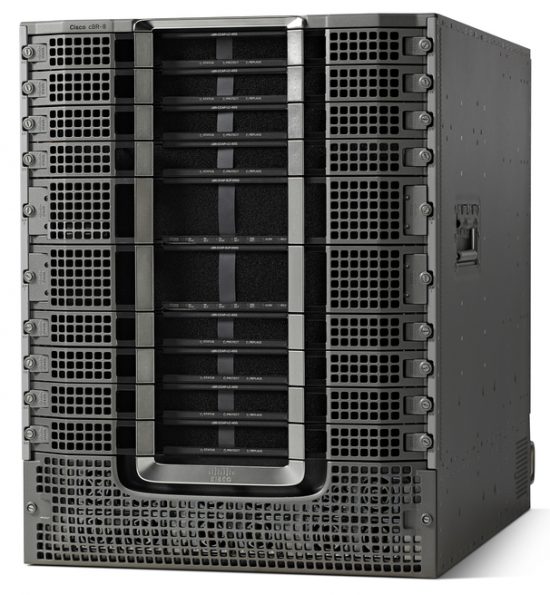Written By Daniel Etman, Director Product Marketing CABU
 We often get asked what we mean by claiming that the Cisco cBR8 is designed from the ground up for DOCSIS 3.1 and beyond. In fact, there is a lot of confusion out there with regard to different hardware architectures in use by the various CCAP vendors. Cisco’s cBR8, introduced in 2015, was designed in-house, based on our decades of expertise in architecting carrier class platforms with 10 or more year lifespans.
We often get asked what we mean by claiming that the Cisco cBR8 is designed from the ground up for DOCSIS 3.1 and beyond. In fact, there is a lot of confusion out there with regard to different hardware architectures in use by the various CCAP vendors. Cisco’s cBR8, introduced in 2015, was designed in-house, based on our decades of expertise in architecting carrier class platforms with 10 or more year lifespans.
This in-house development includes every component including the chassis, backplane, supervisor, line-cards, fans and power supplies. None of it is “off the shelf”. In fact, we had to get the backplane connectors custom built as these high performance connectors did not exist on the market. Keep that in mind as you look at the claims of other solutions out there.
Looking at per slot specifications, we offer 200 G/bps per slot full duplex (200 in and 200 out to a single SUP) which is a bit of a different claim than other vendors that claim either half duplex and/or dual homing to two supervisors. One would have to question the latter as that would have the disastrous impact of losing 50% of the total capacity if you lose a supervisor, removing any high availability capability in the system. With eight slots, that means we have a 1.6 T/bps full duplex capability on the backplane, however, the backplane is engineered to drive a total switching capacity of 3.2 T/bps.
I still remember the early days of the design when we had to increase the size of the chassis from 10RU to 13RU in order to accommodate full DOCSIS 3.1 scalability (and beyond). The reasons for that were both heat dissipation and power. If you run 64 service groups at full DOCSIS 3.1 spec you will be requiring a lot of power and you would need to get the heat out of the system. It’s a fair question how platforms designed years and years ago for DOCSIS 3.0 would be able to sustain full DOCSIS 3.1 capacity.
Looking ahead at the long-term requirements for the cable industry, we went with a custom design, as opposed to other “commercial off the shelf” solutions because it offered us a system which scaled well beyond anything available on the market. Now, what do I mean with “off the shelf” hardware? One such system is called Advanced Telecom Computing Architecture (AdvancedTCA). Vendors can buy chassis, backplanes, and supervisors off the shelf from commercial vendors allowing for a somewhat faster time to market yet obviously with less differentiation and less future readiness.
Getting a little into some technical details here but stay with me. From a capacity perspective, standard ATCA started out with “ZD” connectors allowing 10G/bps per slot. Shipping now, the ATCA design provides the ability to offer maximum 40 G/bps per slot utilizing 4 lanes of 10 G/bps with the mandatory “ZD-plus” connectors available as of 2012. Any line-card with an older “ZD” connector would bring all of the slots down to 10 G/bps, that means any line-cards shipped before the 2013 timeframe. Last year, mid 2015, we have seen the first 100 G/bps ATCA chassis being announced by the COTS vendors utilizing a new “ZD pro” connector that performed better than the “ZD plus” connector, yet this is still only 50% of the cBR8 per slot capacity. I think that it is in fact appropriate to state that you will need at least 40 G/bps per slot if you want to be running DOCSIS 3.1 on all service groups in case of an 8 (or larger) service group line-card, that means any ATCA line-card or chassis before 2013 simply cannot run full DOCSIS 3.1, something the cBR8 will be able to do without any problem, investment protection by design.
The above needs to be taken into account when looking at the different CCAP’s available and their ability to grow with the services in the future. The cBR8 is uniquely architected to grow with the service requirements to a complete DOCSIS 3.1 implementation –all while providing incremental investment protection for our customers and ensuring that cBR8 deployments stay in operation for a long time.
Click on this link to find out more about the cBR-8, the only evolved CCAP.

CONNECT WITH US